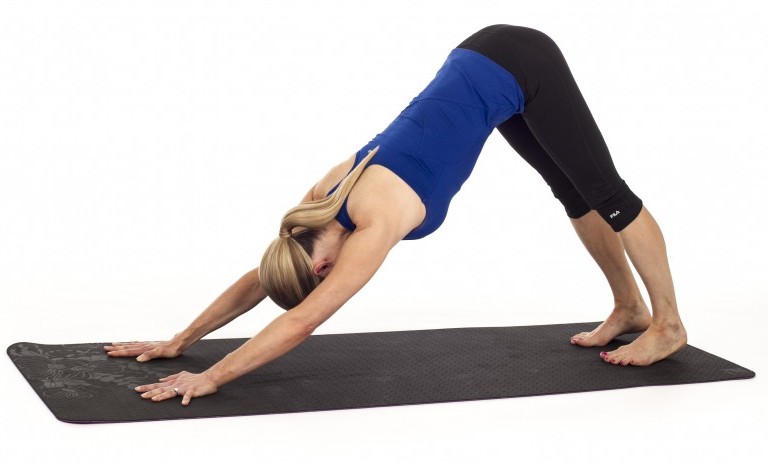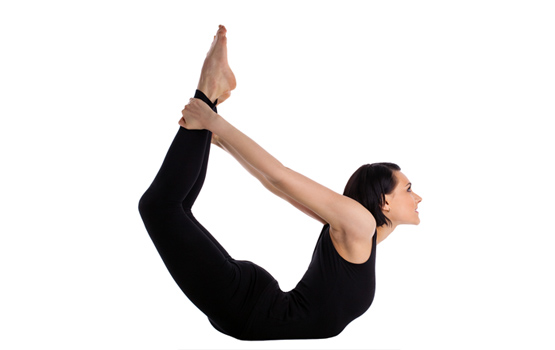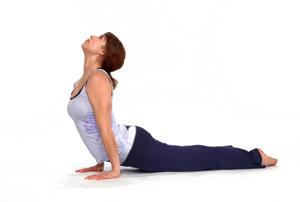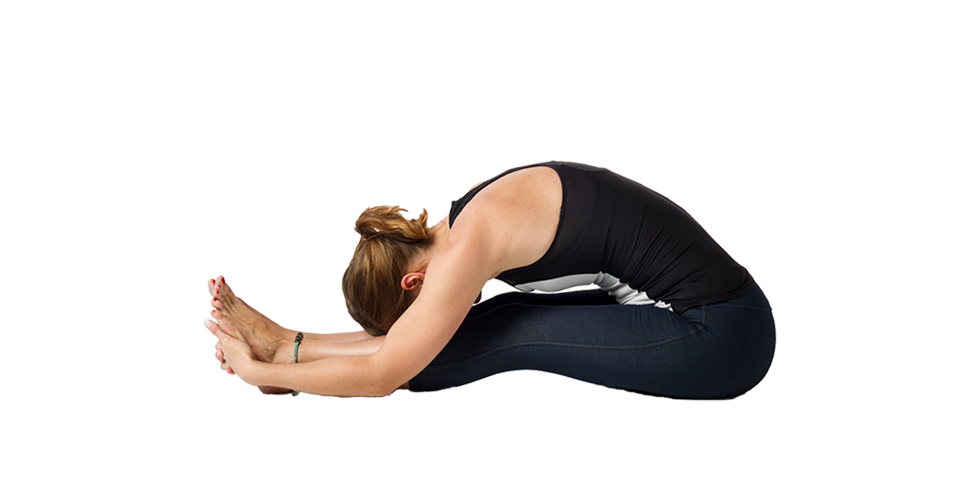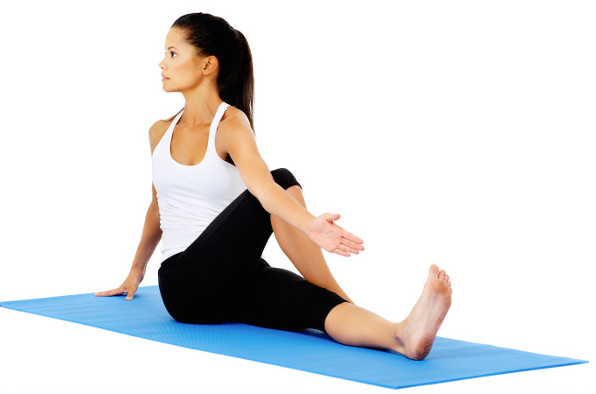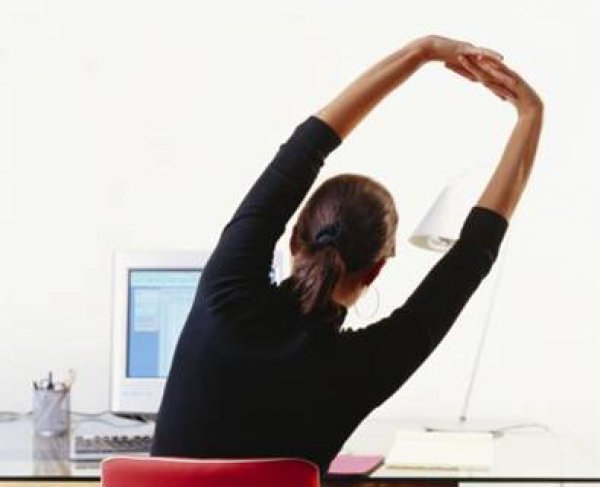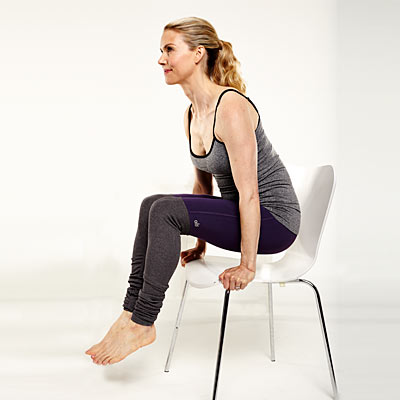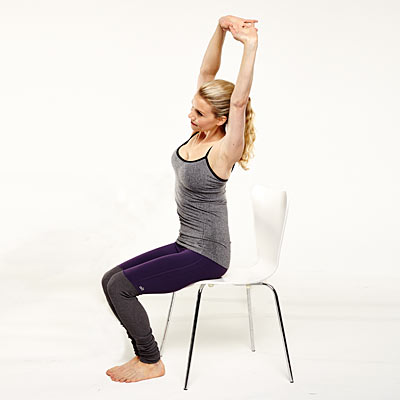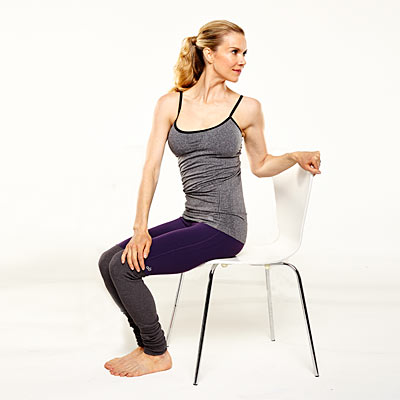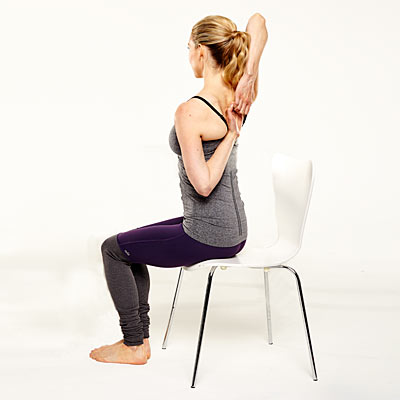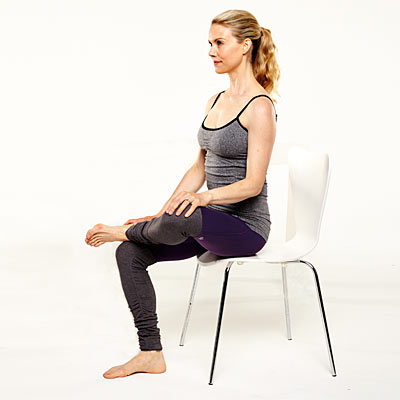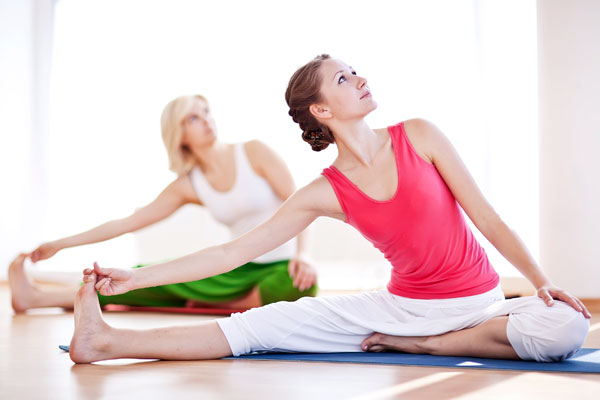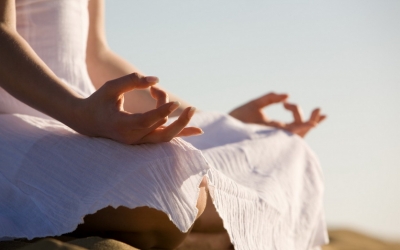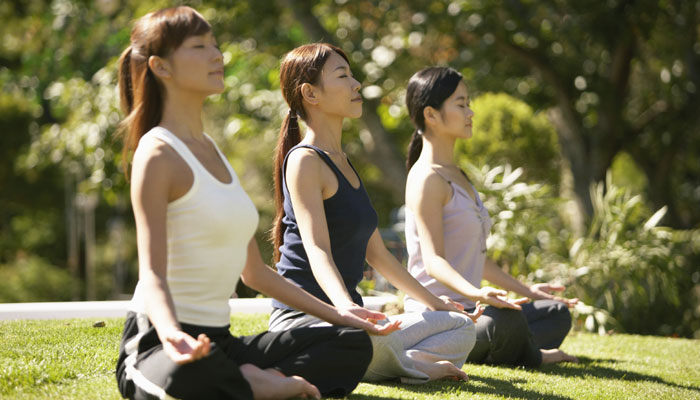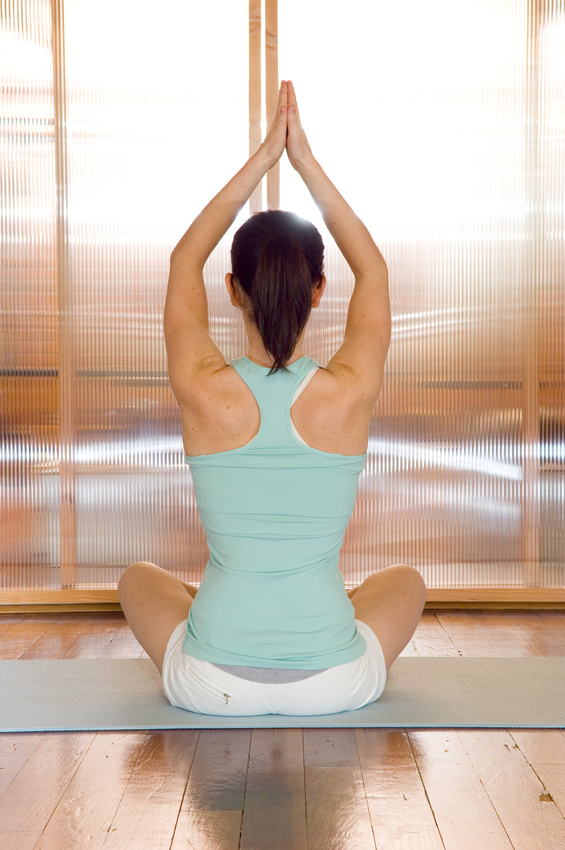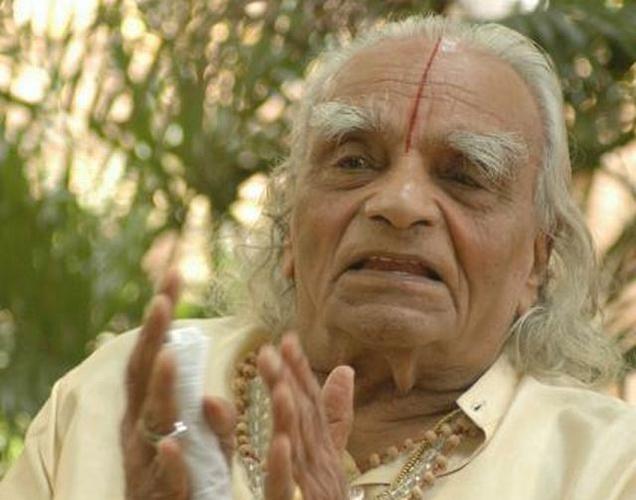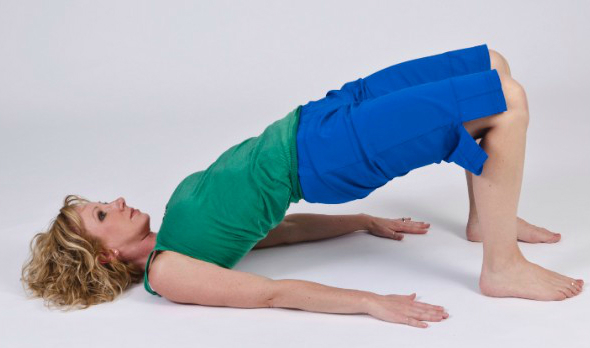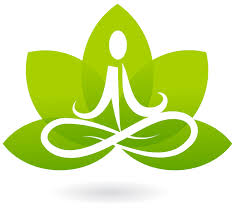
If you’re struggling with sky-high stress levels, yoga can be a great way to calm your mind while giving your body the attention it deserves.
It may seem counterintuitive that twisting yourself into a pretzel can promote relaxation, but it’s true! Studies show that yoga has a whole host of benefits; it can boost immunity, fight food cravings, and can even help relieve stress since most practices dedicate several poses to meditation that brings your thoughts and feelings into awareness.
“The key to de-stressing is realizing how to calm the mind and be present,” says world-renowned yogi and DailyBurn trainer Briohny Smyth. No time for “me” time? To balance family life with the demands of a busy career, Smyth wakes up extra early to dedicate time to her own personal practice.
“It’s really important for me to start the day calm and clearheaded,” she says.
But where’s a new yogi to start? Smyth developed the beginner-friendly sequence of yoga poses above to promote physical and mental awareness and help tame tension. If you’re practicing at night (which can help you sleep better, she recommends you end in savasana (corpse pose) or viparita karani, where your back is pressed on the ground and your legs are up the wall. If you’re practicing in the morning, Smyth suggests beginning and ending with a seated meditation.
Toe Squat: Tuck your toes under your feet. Lean back so your bottom is balanced on your heels. Feel a stretch in the arches of the feet and the toe joints. Focus on lengthening your spine so it’s straight, and bring your attention to your breath. Remain here for 1 minute.

Standing Forward Bend (Uttanasana): To come out of the toe squat, keep your toes tucked under and put your hands on the floor next to your knees. Lift your knees up so you’re standing on the soles of your feet with your upper body bent over. Grab your opposite elbows and relax the crown of your head towards the floor, using the weight of your upper body to stretch the back of the legs. As you inhale, lengthen the spine away from the pelvis. Stay here for 2 minutes.

Down Dog (Adho Mukha Svanasana): Inhale to a flat back and step back to downward dog, holding for one minute. Let energy flow through your arms and out through the sit bones. Keep your neck long and draw your shoulders away from the ears. Press down through the heels as you exhale, which will help stretch the hamstrings, calves and Achilles tendons. Reach the right leg up and back and let your hip open up.

Low Lunge (Anjanayasana): To transition from down dog with the hip open to low lunge, rise on the ball of your left foot and bring your right knee in towards your chest, assuming a one-legged plank. Point the toe of your left foot and lift your butt up high as you place your right foot next to the right hand. Have your fingertips under your shoulders and inhale to a flat back. Place your left knee down on the mat. Bring your torso back over your pelvis, with hands on your front knee, and hold the stretch. For more sensation, reach back with your left hand and grab your left foot, pulling the heel towards the left glute.

Pigeon Pose (Eka Pada Rajakapotasana): Place both hands on the mat under your shoulders, coming onto your fingertips. Heel-toe your right foot towards your left wrist. Scoot your left leg back to get a proper stretch. If your hip is off the floor, grab a towel or block to help fill that gap. As you exhale, fold your upper body over your shin and lower down on to your forearms. Untuck your toes.

Head to Knee Pose (Janushirasana): Bring your left leg around and place it straight out in front of you. Move the sole of your right foot to the inner left thigh. Reach your arms up for one breath, and on the exhale, bring them down and grab the outer edges of the left foot. Inhale, exhale and lengthen your spine.

Half Bound Ankle Pose (Half Baddha Kosana): Now reach your right hand in the above your head and fold to the left so are grabbing your left calf with your right hand. Bring your forehead as close as you can to the outside of the left knee. Take a few breaths here. Inhale fully, and sit up on the exhale.

Seated Bend (One-Legged Upavistha Koasana): Fold toward the center and keep both feet flexed. Open your right shoulder and extend your arm up as you exhale. Fingertips should reach towards your opposite toes. Inhale, lengthen your spine, and press deeper on the exhalation. Inhale once again come to a seated position as you exhale.

Transition (Vinyasa): Shake your legs out in front of you. Hug your knees to your chest and roll three times on your back so your spine feels a sensation. Rock with momentum so you land crouching on your feet. Next, place your hands down under your shoulders and jump the legs back, then bringing your hips up into down dog. Repeat steps 3 to 8 on the opposite side

Corpse Pose (Savasana): Sit up after the final pose and roll on to your back, hugging your knees to your chest. Close your eyes. Open your legs and arms one at a time. Surrender any tension you have, and relax for 3 minutes. Roll to the right side of your body, then press yourself up to a comfy seated position. Sit tall, take a deep breath through your nose, and open your eyes.
Source: cnn



